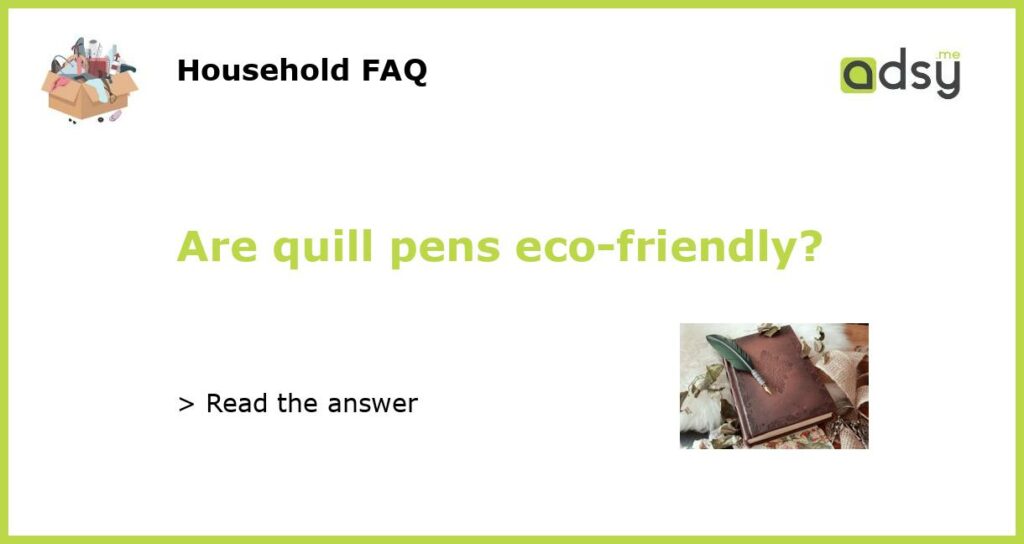Quill pens: A Sustainable Option for Writing
In today’s modern world, where technology dominates almost every aspect of our lives, it is easy to overlook traditional methods of doing things. This is especially true when it comes to writing implements. While ballpoint pens and pencils may be the go-to tool for most people, quill pens offer a unique and eco-friendly alternative. But are quill pens really sustainable? Let’s take a closer look.
What is a Quill Pen?
A quill pen is a writing instrument that dates back to ancient times. It consists of a bird’s feather, typically from a goose or swan, that has been sharpened to a fine point. The feather is then dipped into ink and used to write on parchment or paper.
Biodegradability and Sustainability
One of the key aspects of determining whether a product is eco-friendly is its biodegradability and sustainability. In this regard, quill pens have a clear advantage. The feather used in a quill pen is a natural, renewable resource. Birds molt their feathers regularly, and these feathers can be collected without harming the animal. The feathers can then be repurposed into quill pens, ensuring that no part of the bird goes to waste. Additionally, when a quill pen is no longer usable, it can be easily composted or disposed of without causing harm to the environment.
Low Carbon Footprint
Another important factor to consider when evaluating the eco-friendliness of a product is its carbon footprint. Quill pens have an incredibly low carbon footprint compared to modern writing instruments. The production of quill pens requires minimal energy and resources. As mentioned earlier, the feathers used to make quill pens come from birds that naturally molt. This means that there is no need for additional cultivation, harvesting, or processing of materials. In comparison, the production of plastic pens, which are petroleum-based, involves the extraction of fossil fuels, intense manufacturing processes, and significant emissions of greenhouse gases.
Longevity and Durability
While it is true that quill pens may not last as long as their modern counterparts, they are still a durable option. With proper care, a quill pen can last for years. Additionally, quill pens are easily repairable. If the tip of the feather becomes damaged or dull, it can be reshaped or replaced, extending the life of the pen. In contrast, plastic pens are prone to breaking and cannot be easily repaired. This means that plastic pens have a higher likelihood of ending up in landfills, contributing to environmental pollution.
Promoting Cultural Heritage
Quill pens also have a cultural and historical significance that should not be overlooked. They have been used by some of history’s greatest minds, such as William Shakespeare and Leonardo da Vinci. By using a quill pen, you are connecting with a centuries-old tradition and paying homage to the craftsmanship of the past. In a world that is increasingly fast-paced and reliant on disposable goods, using a quill pen can help foster an appreciation for the artistry and skill that went into creating these writing instruments.






